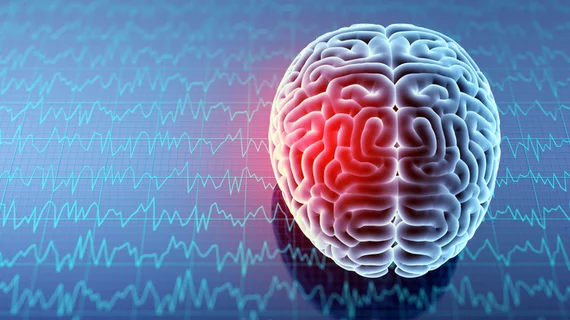Machine learning model quickly and accurately predicts outcomes for TBI patients
Machine learning can be of great diagnostic value for predicting mortality in patients who have sustained traumatic brain injuries.
A new study published in Radiology highlights the accuracy of a machine learning model that combines clinical data with imaging from head CT scans in individuals with severe traumatic brain injuries (sTBI) to quickly predict 6-month outcomes. Researchers trained the fusion model on multiple CT scanning protocols while also incorporating data, such as patients’ vital signs, blood tests and heart function. This resulted in a model performance that surpassed that of three experienced neurosurgeons when predicting patient mortality.
“Every day, in hospitals across the United States, care is withdrawn from patients who would have otherwise returned to independent living,” said co-senior author David Okonkwo, MD, from the Department of Neurosurgery at University of Pittsburgh Medical Center. “The majority of people who survive a critical period in an acute care setting make a meaningful recovery—which further underscores the need to identify patients who are more likely to recover.”
The authors explained that it can often take two weeks or more for TBI patients to emerge from their coma, although many individuals with more severe injuries are removed from life support within the first 72 hours of hospitalization. This presents a great need, the experts suggested, for prognostic tools that can predict what a patient’s recovery might look like well before they wake up. An early understanding of whether a patient’s condition has the potential to improve could prompt more precise treatment and help inform important decisions for clinicians and families.
For this study, the researchers developed a custom model that combined imaging from multiple head CT scans completed using different protocols with clinical data of TBI patients. The advanced algorithm was validated on more than 700 patients, 500 of whom had sustained sTBI, and another 220 from 18 institutions in the Transforming Research and Clinical Knowledge in Traumatic Brain Injury (TRACK-TBI) consortium.
Compared to the International Mission on Prognosis and Analysis of Clinical Trials in TBI (IMPACT) model, the fusion model that used both clinical data and multiple CT scans performed better when predicting mortality and unfavorable outcomes after six months on an internal dataset. Additionally, the fusion model outperformed three neurosurgeons for those same predictions.
“We hope this research shows that AI can provide a tool to improve clinical decision-making early when a TBI patient is admitted to the emergency room, towards yielding a better outcome for the patients,” the experts said.
Related neuroimaging content:
New MRI technique helps physicians ID multiple sclerosis lesions
Off-label use of WEB device effective for sidewall aneurysms
CMS coverage decision for Alzheimer's drug, related PET scans sparks concern in imaging community
Better neuroimaging guidelines could save practices millions, research shows
Researchers use MRI scans to develop a growth chart specific to the human brain

